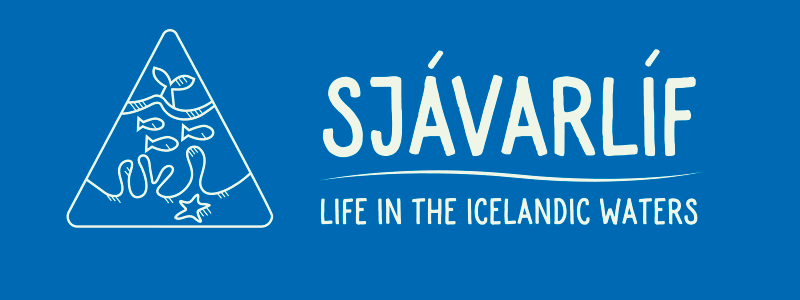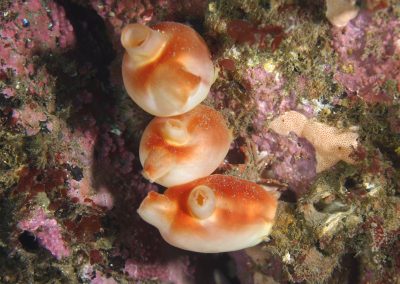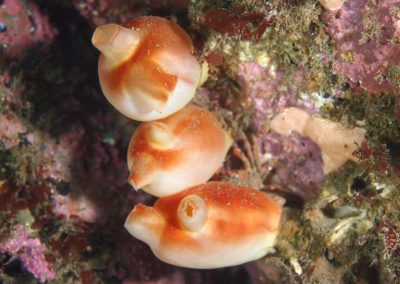Tunicates
Tunicata
Of all invertebrates, the tunicates (urochordata) are the closest relatives to humans. There is no resemblance in adult tunicates. However, the larvae stage is very unlike the adult stage and looks like a tadpole. Tunicates are in fact in the same phyla as we are in, chordata. Tunicates can be both sessile and planktonic.
The adult form of the sessile sea squirts (ascidacea) are usually ball-like with two short siphons, one for inhaling seawater, thSub other for exhaling. Within the sea squirt, a mechanism filters out small animals and food particles.
Some species such as the sea peach (Halocyntia pyriformis) live as individuals and can be the size of tennis balls. Others are much smaller and colonial. They often look like the totally unrelated sponges.
The pelagic tunicate groups are two. The larvaceans (appendicularia) keep the larvae look all their life. The salps (thaliacea) change forms and are sort of pelagic sea squirts. Salps can be common, especially in warmer waters. They are jelly-like and can multiply quickly. This can cause problems if they are stuck in fishing gear.
HÞV


